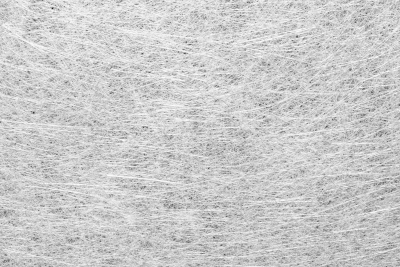What Is an Inorganic Fiber?

Inorganic fiber is a man-made chemical fiber derived from inorganic materials.
Examples of inorganic fibers include glass fiber, metal fiber, carbon fiber, rock fiber, and slug fiber.
Glass fiber is an incombustible material with excellent thermal and electrical insulating properties, widely used in reinforced plastics. Metallic fibers, used for decorative purposes and in metallic yarns, are produced from stainless steel, aluminum, iron, nickel, and copper. Carbon fibers, obtained by carbonizing precursor fibers like acrylic under high temperatures, offer excellent thermal shock resistance, are lighter than aluminum, and are stronger than iron.
Uses of Inorganic Fibers
Inorganic fibers generally have excellent heat resistance and are widely used in heat and sound insulation applications. Glass fiber, for instance, is utilized in helmets, fishing rods, and ski boards, while its sheets serve in flooring, heat insulation, and building materials. Metallic fibers find applications in composite materials, reinforcing materials, filtering materials, and static elimination, including use in ropeway ropes, construction cranes’ wires, and copper wires for power transmission. Carbon fiber, known for its electrical resistance and thermal conductivity akin to metals, is used in airplane fuselages, car bodies, electromagnetic shields, electrodes, and heat-resistant structures.
Principle of Inorganic Fibers
Inorganic fibers, known for their high strength, include glass fiber with strengths of 3.5 to 4.6 GPa, surpassing that of para-aramid fibers. Classified as Super Fibers due to their exceptional strength, inorganic fibers also boast high heat resistance, with ceramic fibers resistant to temperatures above 2,000°C, and outstanding durability, making them ideal for industrial applications requiring strength and heat resistance.
Types of Inorganic Fibers
Inorganic fibers are categorized into amorphous fibers like glass fiber and rock wool, polycrystalline fibers including carbon fiber and alumina fiber, and monocrystalline fibers such as wollastonite and potassium titanate fiber. Amorphous fibers exhibit high strength and elasticity without grain boundaries, while polycrystalline fibers, comprising small crystals, offer excellent heat resistance. Monocrystalline fibers, or whisker-shaped fine fibers, are noted for their extreme strength.
While inorganic fibers also exist in natural forms such as asbestos, which is a fibrous inorganic material free of hydrocarbons, it’s crucial to note that asbestos, due to its health risks, is not classified as an inorganic fiber but rather as a mineral fiber.
How to Select Inorganic Fibers
Glass fibers are distinguished into short fibers, glass wool, and long fibers. Short glass fibers are produced by heating and blowing molten glass into a cotton-like material using centrifugal force. Long fibers are crafted by winding molten glass on a high-speed winder to create extended threads. Carbon fibers are divided into PAN-based, produced by pyrolyzing at temperatures above 1,000°C and pitch-based, further categorized into isotropic carbon fiber with lower mechanical properties and high-performance carbon fiber with superior mechanical properties and high elastic modulus.